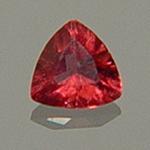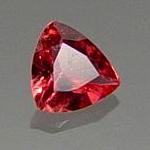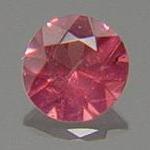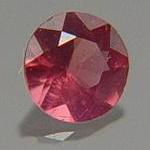|
ClassicGems.net |
|
|
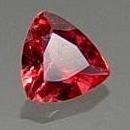 |
|
Eudialyte |
|
|
iscovered in 1819; IMA status: Valid (pre-IMA; Grandfathered) |
|||
|
|
|
|
|
Chemistry |
|
|
|
|
|
Na4(Ca,Ce)2(Fe++,Mn,Y)ZrSi8O22(OH,Cl)2 |
|
|
|
Sodium Calcium Cerium Iron Manganese Zirconium Silicate Hydroxide Chloride |
|
Molecular Weight: |
992.15 gm |
|
Composition: |
Sodium |
9.27 % |
Na |
12.49 % |
Na2O |
|
|
Calcium |
6.06 % |
Ca |
8.48 % |
CaO |
|
Cerium |
7.06 % |
Ce |
8.27 % |
Ce2O3 |
|
|
|
Yttrium |
0.90 % |
Y |
1.14 % |
Y2O3 |
|
|
Zirconnium |
9.19 % |
Zr |
12.42 % |
ZrO3 |
|
|
Manganese |
1.66 % |
Mn |
2.14 % |
MnO |
|
|
Iron |
3.38 % |
Fe |
4.34 % |
FeO |
|
|
Silicon |
22.65 % |
Si |
48.45 % |
SiO2 |
|
|
Hydrogen |
0.15 % |
H |
1.36 % |
H2O |
|
Chlorine |
1.79 % |
Cl |
1.79 % |
Cl |
|
|
― |
― % |
Cl |
-0.40 % |
-O=Cl2 |
|
|
|
Oxygen |
37.90 % |
O |
|
|
|
|
|
100.00 % |
|
100.48 % |
= TOTAL OXIDE |
|
|
|
||||
|
Classification |
|
|
|
|
|
Silicates (Germanates) |
|
|
8/E.23-10 |
|
|
|
9 : SILICATES (Germanates)
|
|
Related to: |
Eudialyte Group |
|
Members of Group: |
Eudialyte Group: Alluaivite, Andrianovite, Aqualite, Carbokentbrooksite, Davinciite, Dualite, Eudialyte, Feklichevite, Fengchengite, Ferrokentbrooksite, Georgbarsanovite, Golyshevite, Hydrorastsvetaevite, Ikranite, Ilyukhinite, Johnsenite-(Ce), Kentbrooksite, Khomyakovite, Labyrinthite, Manganoeudialyte, Manganokhomyakovite, Mogovidite, Oneillite, Raslakite, Rastsvetaevite, Siudaite, Taseqite, Voronkovite, Zirsilite-(Ce) |
|
Varieties: |
Manganoeudialyte, Eucolite |
|
Synonyms: |
Almandine spar, Eudialite, Eudyalite, Saami Blood |
|
|
|
|
Crystal Data |
|
|
|
|
|
Crystals short rhombohedral to long prismatic up to 10 cm. More commonly as irregular masses and vein filings. |
|
|
None |
|
|
|
|
|
Physical Properties |
|
|
|
|
|
Perfect. Distinct on {0001}, imperfect on {1010} and {1014} {1120} |
|
|
Irregular/Uneven |
|
|
Brittle |
|
|
5.0 - 6.0 |
|
|
2.74 - 3.10 (g/cm3) |
|
|
None |
|
|
Mild; GRapi = 7,287.91 (Gamma Ray American Petroleum Institute Units) |
|
|
|
|
|
Optical Properties |
|
|
|
|
|
Variable: Carmine-red, orange-red, orange, pink, cherry-red, brownish-red, yellowish-brown, brown, yellow, violet, green |
|
|
Transparent to Translucent |
|
|
Vitreous to Dull |
|
|
1.606 - 1.613 Uniaxial ( + or - ) |
|
|
0.003 - 0.010 |
|
|
n/a |
|
|
Weak |
|
|
|
|
|
Occurances |
|
|
|
|
|
Geological Setting: |
In nepheline syenites, alkalic granites, and associated pegmatites; may be a major constituent, of both magmatic and late-stage pneumatolytic origin. |
|
Common Associations: |
Aegirine, Aenigmatite, Agrellite, Albite, Gittinsite, Vlasovite, Microcline, Mosandrite-(Ce), Nepheline, Vlasovite |
|
Common Impurities: |
K, Mg, Sr, TR, Ti, Nb, Al, F, P, S |
|
Type Locality: |
Kangerdluarssuq (Kangerdluarsuk) Firth, Ilimaussaq complex, Narsaq, Kitaa (West Greenland) Province, Greenland |
|
Year Discovered: |
1819 |
|
View mineral photos: |
|
|
|
|
|
Unusual Gem Categories |
|
|
|
|
|
|
|
|
More Information |
|
|
|
|
|
|
|
|
|
|
|
Eudialyte is a principal member of the Eudialyte Group of minerals that includes Eudialyte, Johnsenite-(Ce) and Kentbrooksite plus many other non-gem type minerals. Eudialyte was first described in 1819 by German chemist Friedrich Stromeyer (1776 - 1835) as one of the major constituents of nepheline syenites from the Ilímaussaq Complex, Greenland. In 1832 the mineral Stromeyerite was named in his honor by French mineralogist François Sulpice Beudant (1787 - 1850). The name Eudialyte is from the Greek words eu meaning well and dialytos meaning decomposable, referring to its easy solubility in acids. Eudialyte is very rarely found as crystals clean enough for faceting and faceted gems are always small and usually included. It is mostly available as cabochons featuring its beautiful colors of reds and pinks contrasted with black Aegirine and white Albite. Eudialyte may be mildly radioactive due to the presence of Cerium (Ce). Major sources of Eudialyte material are the Kola Peninsula in Russia and in Canada at Mont Saint-Hilaire and the Kipawa Complex at Sheffield Lake. |
|
|
Eudialyte gems for sale:
|
||||||||||||||||||||||||||||||||||||||||||||||||||||||
